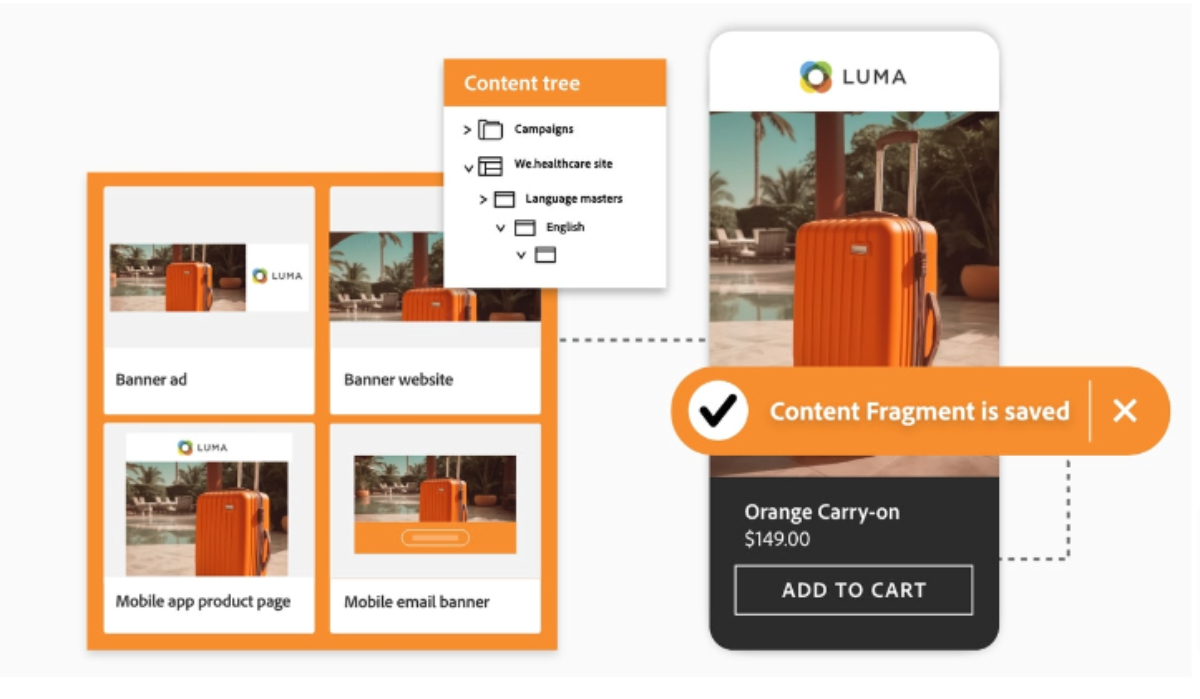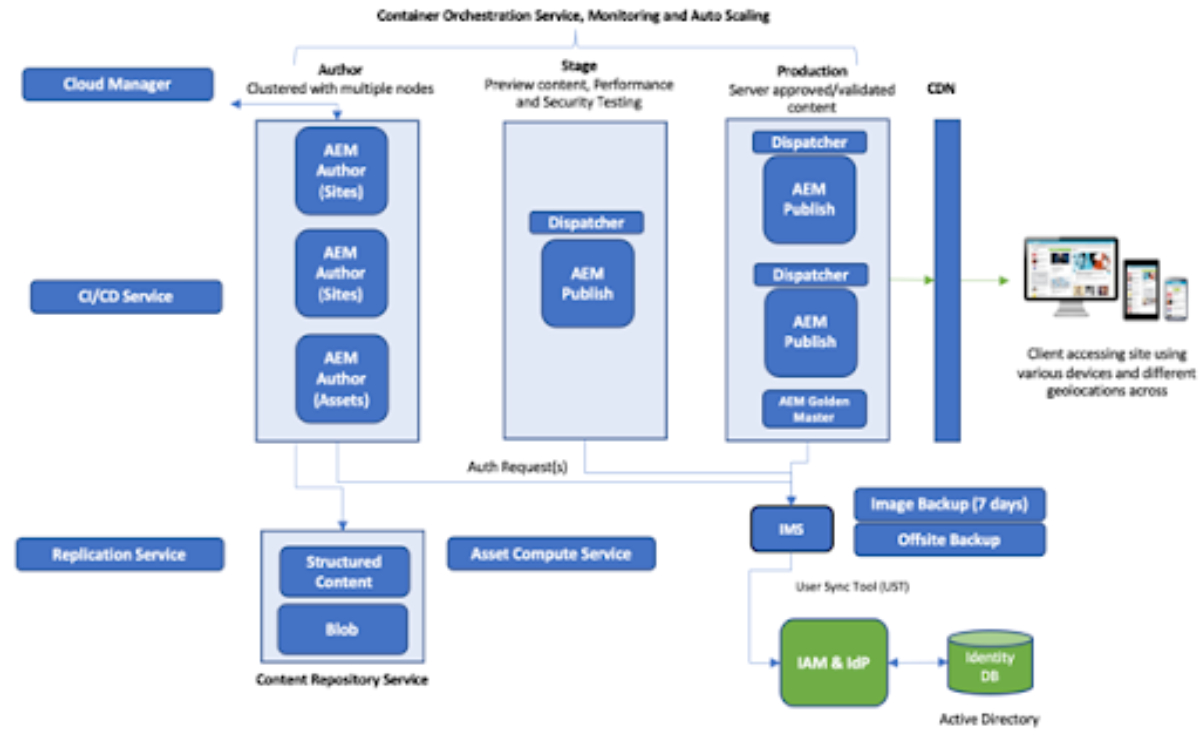If you want to emerge as a winner in the competitive marketplace, focus on delivering memorable customer experiences. An average customer expects smooth interactions at different touchpoints across their journey.
So, brands must strive to mitigate friction by creating consistent omnichannel experiences. Adobe Experience Manager (AEM) is a digital experience solution that caters to changing customer demands and helps scale up the business. It offers many features that let companies elevate the customer experience and reduce the time to market. AEM is a great platform that allows you to innovate and scale up the company.
To help you make the most of this platform, we are here to discuss AEM features designed to boost the business’s bottom line.
What are the Adobe Experience Manager Features?
AEM is one of the most coveted DXPs because of the following features:
1. Multichannel Content Management and Delivery
AEM allows you to manage and deliver content across diverse channels. Whether it is your website, mobile app, IoT device, or AI interface like Alexa, AEM helps maintain a consistent brand reputation regardless of the platform.

Customers interact with your brand across different touchpoints in their buyer’s journey. With AEM, you can create responsive designs that automatically adapt to the device, screen size, and platform.
2. Convenient Content Authoring
AEM offers an intuitive content authoring interface that makes content creation a breeze. It eliminates the need to learn complex coding languages so that even non-technical professionals can create impressive digital assets. The Rich-Text editor plugin, drag-and-drop feature for components, and a live preview mode enable quick, seamless, and efficient content creation processes.
As a plug-and-play platform with a ‘what you see is what you get’ editor, it has become a popular CMS and CX tool for businesses. The editable templates, along with core components, headers, footers, breadcrumbs, forms, page navigation, search teasers, etc., help cut down the AEM website development time and cost while speeding up the process of building pages.
3. Integrated Digital Asset Management (DAM) and Workflow Optimization
Asset management is one of the most essential aspects of any business. You have to handle numerous assets and optimize the workflows for productivity. AEM offers integrated DAM in addition to a robust workflow management system. It facilitates smooth operations while eliminating mundane tasks.
4. Scalable, Cloud-Native CMS
As AEM uses a scalable, cloud-native CMS using open, extensible APIs, it helps create new apps and improves the digital experience. As the cloud service auto-scales in no time and new features get added continuously, IT resources can focus on other important tasks. There is no need to plan for upgrades every now and then or track the site traffic. Hence, developers can try out the intuitive web development tools, the app builder, and hassle-free content automation.

5. Personalized Multi-Site Management
Your customers are not limited to a particular geographical location. They exist all over the world and therefore, it is imperative to have your websites across different languages catering to their respective geographies. AEM has your back as it allows you to translate the site content into various languages and even revamp the layout according to the regional specifications.
6. Data Analytics
Having websites, apps, and social media channels in place is just half the battle. You also have to track the customer behavior, learn from past interactions, and make necessary amendments to the strategy. AEM has an advanced extension that offers real-time insights, predictive analysis, and machine learning-based automation to create personalized content. With Experience Manager AI, you can analyze your marketing efforts and digital asset performance with the help of real-time data insights retrieved through a centralized reporting system.
7. Immersive eCommerce
AEM has an immersive eCommerce feature that integrates product catalogs and media assets. It allows you to craft winning shopping journeys that help convert visitors into buyers.
8. Scalable AEM Forms with Cloud Services
AEM helps in simplifying form creation and management processes making them accessible across various devices. Adobe Experience Manager Forms as a Cloud Service offers a cloud-based PaaS solution so that companies can distribute digital forms without any hassles. It also integrates submitted data with backend processes and business rules. So, the data gets stored safely in an external data repository.
9. AEM Cloud and Magento Integration
AEM 6.0 has introduced an exciting feature that allows you to integrate AEM Cloud and Magento with the help of Adobe I/O Runtime. It helps users create custom microservices that any Adobe 3rd party solution can utilize. It, therefore, allows integration across different solutions. If you are using AEM 6.5, you also get Magento pre-built API connectors that make building pages all the more effortless. It is advisable to seek professional help from AEM experts to use such advanced features to their maximum potential.
10. Visual Media Conversion
We have transitioned to an experience-driven world, and customers keep switching between different platforms. As a result, things become difficult for marketers and developers. Imagine resizing images and videos for different devices, screen sizes, applications, platforms, and OS systems. Wouldn’t it be super stressful? So, AEM offers a visual media conversion feature that lets you resize digital media assets in bulk and convert them into relevant screen sizes, formats, and channels. Thus, you don’t have to spend resources and money on manual conversion.
Conclusion
To sum up, incorporating AEM in your business technology would enhance customer engagement by increasing the reach of your campaigns. With this DXP, it is possible to formulate impactful cross-functional experiences that exceed customer expectations. So, whether you are a developer or a business owner, AEM is a powerful tool with many benefits and uses. It is a central dashboard that gives you a holistic view of your business operations, data insights, and customer experience. It’s all about empowering every business professional to adopt more efficient processes and marketing strategies.




